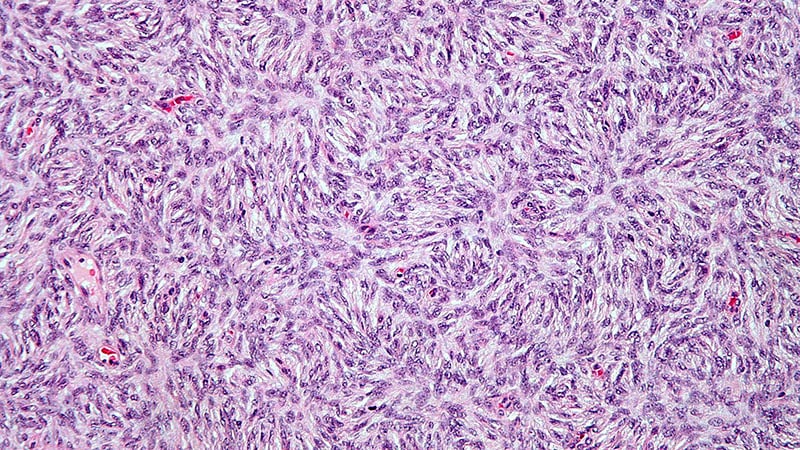Racial Disparities in the Incidence and Outcomes of Dermatofibrosarcoma Protuberans, a Rare Cutaneous Sarcoma
Concetti Chiave
Black individuals have a significantly higher incidence of dermatofibrosarcoma protuberans (DFSP), a rare cutaneous soft tissue sarcoma, compared to White individuals. Older age and larger tumor size are associated with poorer overall survival and cancer-specific survival for DFSP patients.
Sintesi
This study analyzed data from the National Cancer Institute's Surveillance, Epidemiology, and End Results (SEER) registry to provide a comprehensive report on the incidence and prognostic factors for dermatofibrosarcoma protuberans (DFSP), a rare, low-grade cutaneous soft tissue sarcoma.
The key findings are:
-
The overall incidence rate of DFSP was 6.25 cases per million person-years, with a significantly higher incidence in Black individuals compared to White individuals (8.74 vs 4.53 cases per million person-years).
-
The 5-year overall survival rate for DFSP patients was 95.8%. Older age (≥ 60 years), male gender, and larger tumor size (≥ 3 cm) were associated with poorer overall survival.
-
The 1-year and 5-year DFSP-specific survival rates were 99.9% and 99.2%, respectively. Older age and larger tumor size were associated with significantly worse cancer-specific survival.
-
Larger tumor size and DFSP located on the head/neck or genitalia were significantly associated with increased risk of metastasis. Higher socioeconomic status was linked to a lower risk of metastasis.
The authors conclude that these findings highlight the need for further research to understand the underlying causes of the racial disparities in DFSP incidence and to develop strategies for earlier detection and improved management of this rare sarcoma.
Traduci origine
In un'altra lingua
Genera mappa mentale
dal contenuto originale
Visita l'originale
www.medscape.com
Rare Cutaneous Sarcoma More Common in Black Individuals
Statistiche
The overall DFSP incidence rate was 6.25 cases per million person-years.
The incidence rate was higher in Black individuals than in White individuals (8.74 vs 4.53 cases per million person-years).
The 5-year overall survival rate for DFSP patients was 95.8%.
The 1-year and 5-year DFSP-specific survival rates were 99.9% and 99.2%, respectively.
Older age (≥ 60 years) was associated with a higher hazard ratio (HR) for poorer overall survival (HR = 6.66) and cancer-specific survival (HR = 3.47).
Larger tumor size (≥ 3 cm) was associated with a higher HR for poorer overall survival (HR = 2.02) and cancer-specific survival (HR = 5.34).
Larger tumor size (odds ratio [OR] = 2.24) and DFSP located on the head/neck (OR = 4.88) or genitalia (OR = 3.16) were significantly associated with increased metastasis risk.
Higher socioeconomic status was linked to a lower risk of metastasis.
Citazioni
"Our findings highlight the increased incidence rates of DFSP among Black patients. We demonstrate the interplay between patient demographics and clinical factors in influencing DFSP metastasis, OS, and cancer-specific survival."
"The results may be useful for further evaluation of proposed causes, which will ultimately lead to further understanding and prevention of this disease."
Domande più approfondite
What potential biological, genetic, or environmental factors may contribute to the observed racial disparities in DFSP incidence?
The observed racial disparities in DFSP incidence, with a higher rate among Black individuals compared to White individuals, could be influenced by a combination of biological, genetic, and environmental factors. Genetic predispositions within different racial groups may play a role in the development of DFSP. Variations in genetic markers or mutations that increase susceptibility to DFSP could be more prevalent in Black populations, contributing to the higher incidence rate. Additionally, differences in skin pigmentation and melanin content between racial groups may impact the risk of developing DFSP, as melanin has been shown to have protective effects against certain types of skin cancers. Environmental factors such as exposure to UV radiation, pollutants, or other carcinogens could also contribute to the racial disparities in DFSP incidence. Further research is needed to elucidate the specific biological, genetic, and environmental factors that underlie these disparities.
How can the healthcare system and medical community address the disparities in DFSP outcomes, particularly for older patients and those with larger tumors?
To address the disparities in DFSP outcomes, especially for older patients and those with larger tumors, the healthcare system and medical community can implement several strategies. Firstly, increasing awareness and education among healthcare providers about the higher risk of poorer outcomes in these patient populations is crucial. This can lead to earlier detection, timely interventions, and appropriate management strategies. Tailored treatment plans that consider age, tumor size, and other prognostic factors should be developed to optimize outcomes for older patients and those with larger tumors. Multidisciplinary care teams involving dermatologists, oncologists, surgeons, and other specialists can ensure comprehensive and coordinated care for patients with DFSP. Additionally, efforts to improve access to healthcare services, especially for underserved populations, can help reduce disparities in outcomes by ensuring timely diagnosis and treatment for all patients.
What implications do these findings have for the development of novel diagnostic and therapeutic approaches for DFSP, and how might they inform future research in rare sarcomas?
The findings regarding DFSP incidence, survival outcomes, and associated factors have significant implications for the development of novel diagnostic and therapeutic approaches for this rare cutaneous sarcoma. Understanding the demographic and clinical factors that influence DFSP metastasis, overall survival, and cancer-specific survival can guide the development of personalized treatment strategies. Future research could focus on identifying specific genetic markers or molecular pathways associated with DFSP progression and metastasis, leading to targeted therapies. The interplay between patient demographics and clinical factors highlighted in this study underscores the importance of a multidimensional approach to managing DFSP. These findings can inform future research in rare sarcomas by emphasizing the need for comprehensive studies that consider both genetic and environmental factors, as well as the impact of demographic variables on disease outcomes. Collaborative efforts between researchers, clinicians, and patient advocacy groups will be essential in advancing our understanding of DFSP and improving outcomes for patients with this rare sarcoma.

